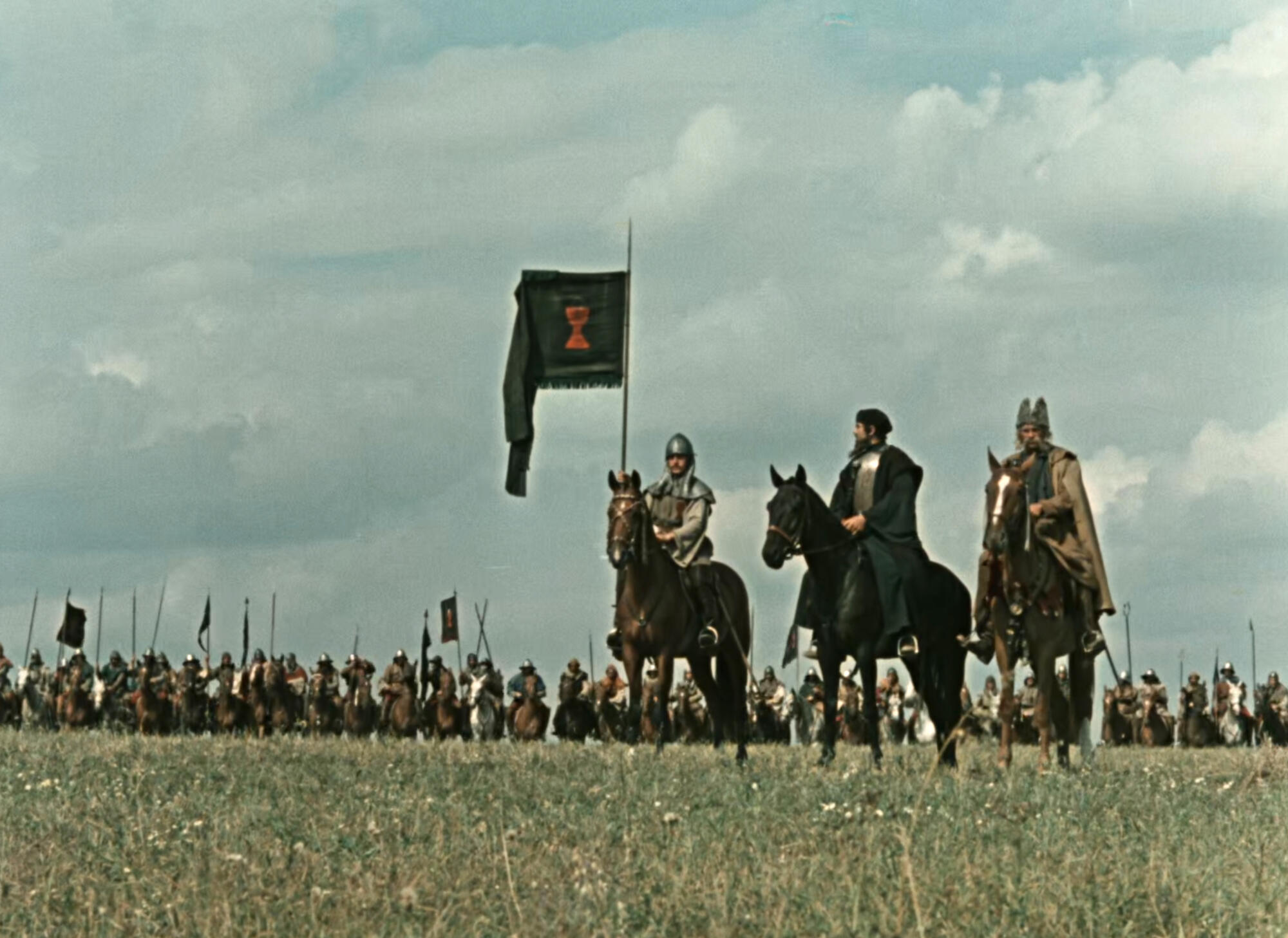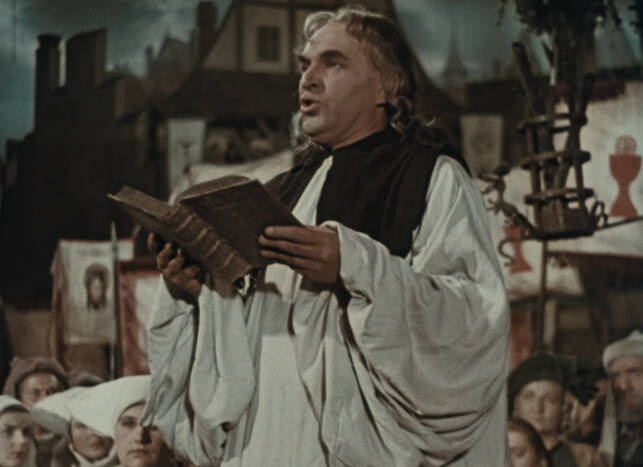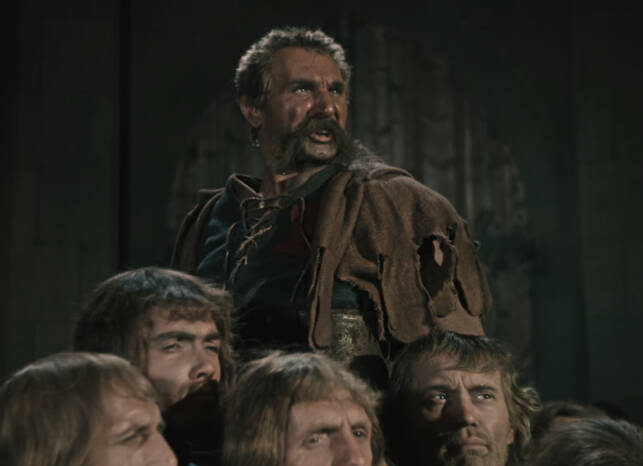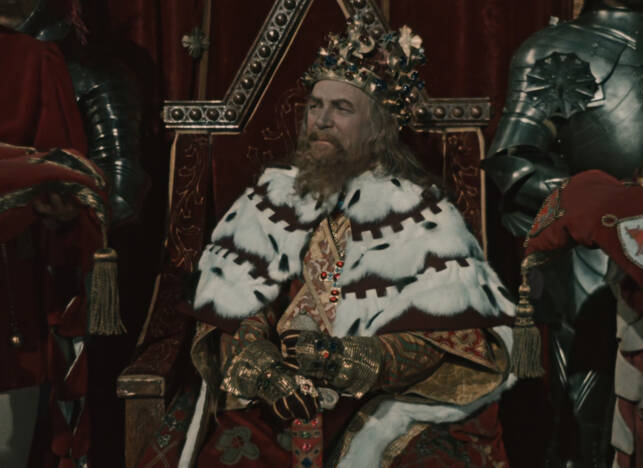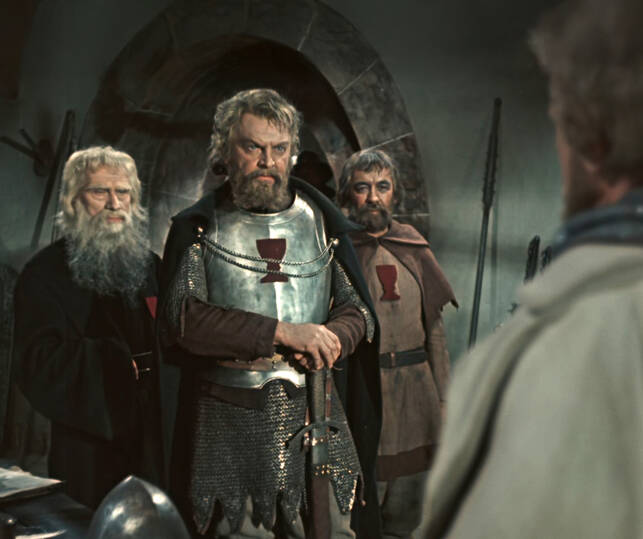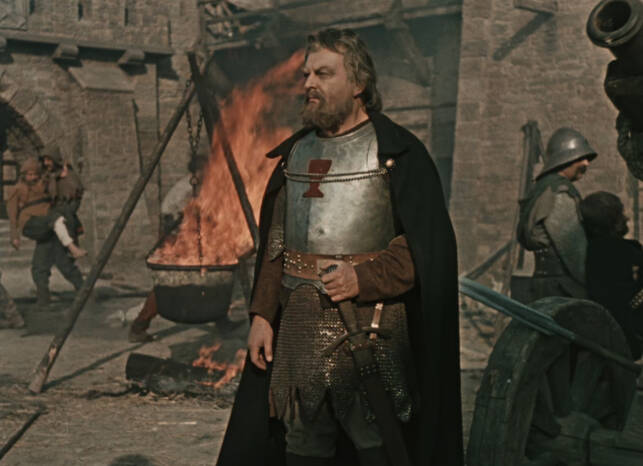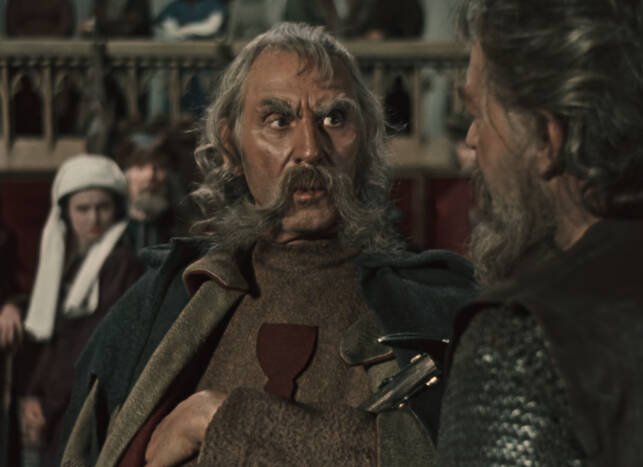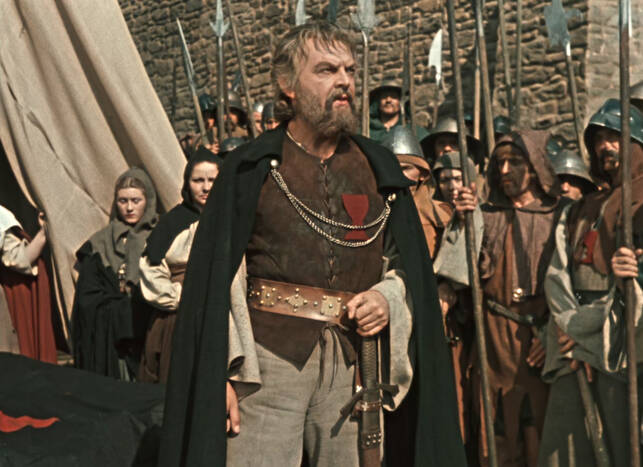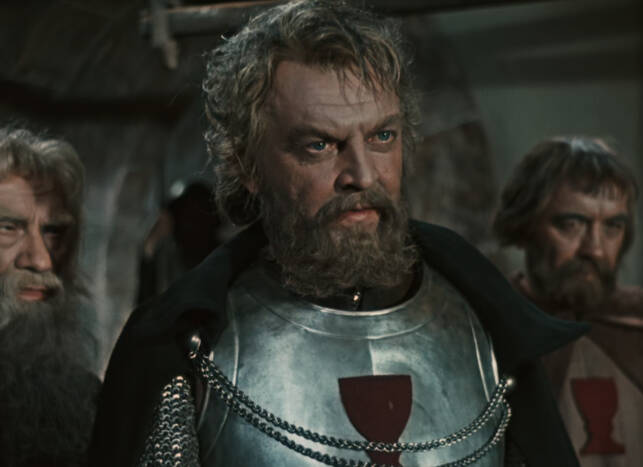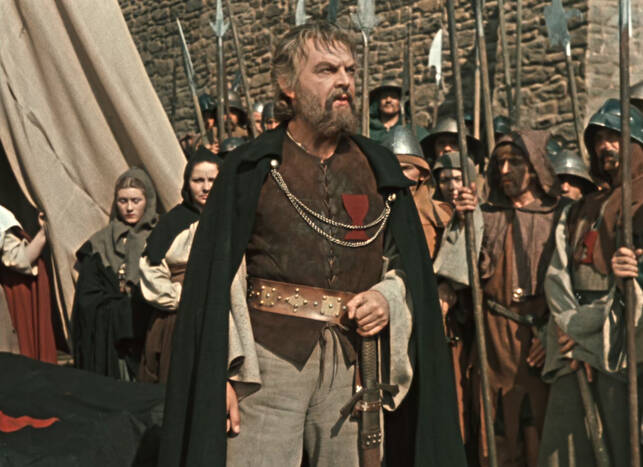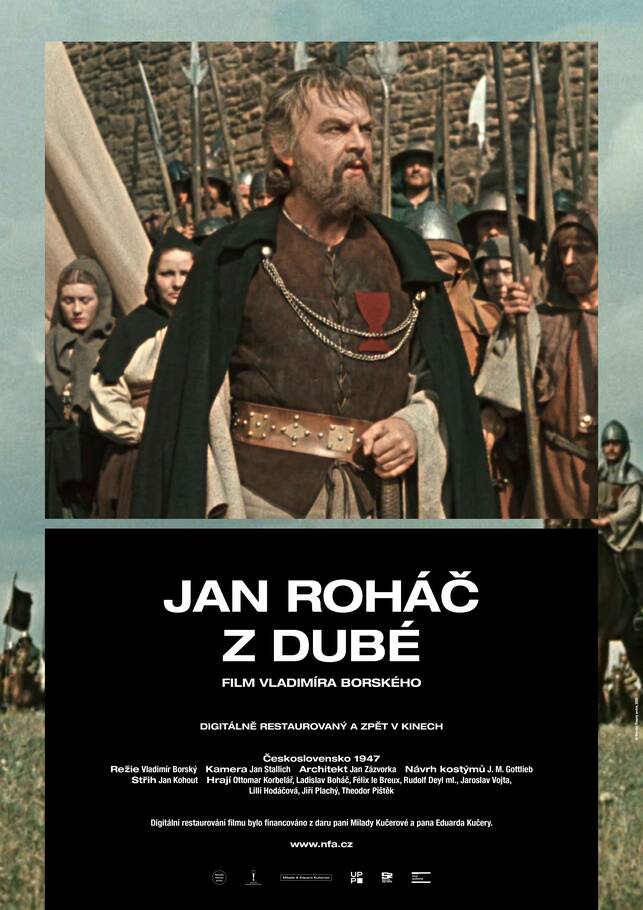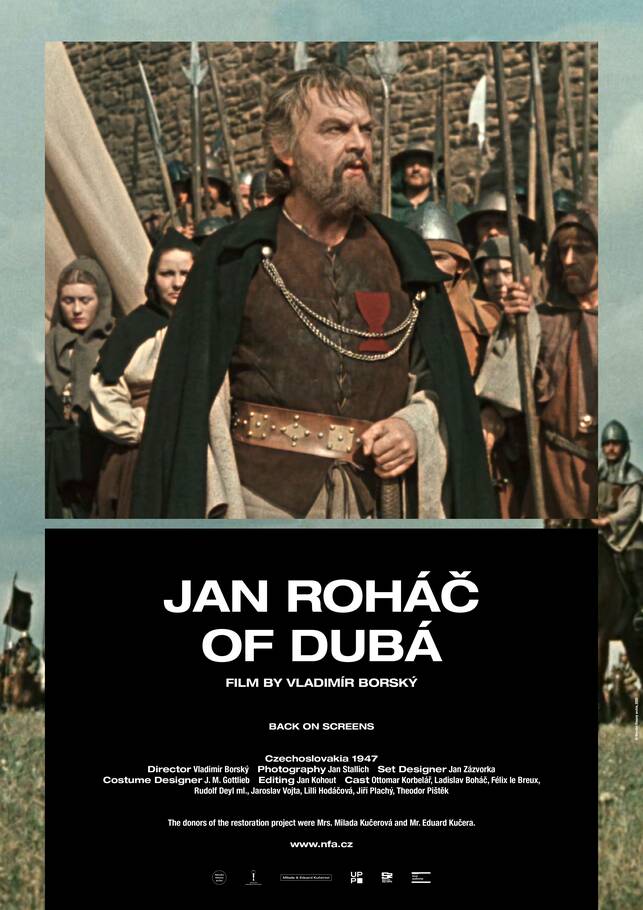Summary
The first feature-length colour film produced in Czechoslovakia, Jan Roháč of Dubá was a long-awaited project intended to demonstrate the technical sophistication of the nationalised film industry, while also boosting national self-confidence with its message. In keeping with post-war ideology, the titular Hussite leader is portrayed as a symbol of Czech resistance to German oppression. In the film, based on a play by Alois Jirásek, Hussitism is not portrayed purely as a religious movement, but rather above all as a social movement which contributed to social uprising and national liberation. The filming itself was preceded by careful preparation. Director Vladimír Borský, who also co-wrote the screenplay, studied Jirásek’s play and extant written and pictorial material related to the Hussite Wars. Period costumes had to be sewn for the actors and several hundred extras, and sets were also built. The imperial chamber, coronation hall, Old Town Hall council chamber and the castle of Sion were created at the Barrandov and Radlice studios. Through previously working with foreign productions, architect Jan Zázvorka, camera operator Jan Stallich and Borský himself already had experience with colour film, which was a prerequisite for their selection. This epic film, which follows the final phase of the struggle between the remnants of the Hussity Army and King Sigismund, premiered in the three largest cinemas in Prague at the end of March 1947.Jan Roháč of Dubá paved the way for the historical themes which would dominate the silver screen in subsequent years. By November 1948, the so-called “Jirásek Campaign” was launched, with the aim of promoting Alois Jirásek’s other works. But while the revival of the Hussite tradition after the war was relatively spontaneous, the topic would later mainly become part of fulfilling the directives of the Communist Party.

